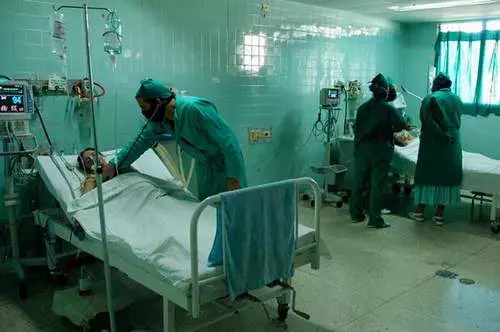
As a result of the strategy for the control of COVID-19 and the successful application of nationally produced vaccines for the prevention of the disease, Cuba has not recorded deaths from the SARS-CoV-2 coronavirus for nearly a year.
The last death occurred on August 20, 2022, when the total number of deaths since the beginning of the pandemic reached 8,530, which indicates a lethality rate of 0.76, among the lowest in Latin America.
The presence of COVID-19 was controlled by means of prevention and diagnosis measures, hospital care and the use of medicines and vaccines manufactured by Cuban biotechnology.
As Cuba moves into the fourth year since the beginning of the pandemic on the island, the number of cases detected today is low, which confirms the effectiveness of the strategy implemented.
Up to the beginning of this month, 45 million 533 thousand 369 doses of anti-COVID-19 vaccines had been applied to 10 million 766 thousand 211 Cubans, of whom 89.10 percent have been fully vaccinated.
From wikipedia:
Coronavirus disease 2019 (COVID-19) is a contagious disease caused by the virus severe acute respiratory syndrome coronavirus 2 (SARS-CoV-2). The first known case was identified in Wuhan, China, in December 2019.[5] The disease quickly spread worldwide, resulting in the COVID-19 pandemic.
The symptoms of COVID‑19 are variable but often include fever,[6] cough, headache,[7] fatigue, breathing difficulties, loss of smell, and loss of taste.[8][9][10] Symptoms may begin one to fourteen days after exposure to the virus. At least a third of people who are infected do not develop noticeable symptoms.[11] Of those who develop symptoms noticeable enough to be classified as patients, most (81%) develop mild to moderate symptoms (up to mild pneumonia), while 14% develop severe symptoms (dyspnea, hypoxia, or more than 50% lung involvement on imaging), and 5% develop critical symptoms (respiratory failure, shock, or multiorgan dysfunction).[12] Older people are at a higher risk of developing severe symptoms. Some people continue to experience a range of effects (long COVID) for years after infection, and damage to organs has been observed.[13] Multi-year studies are underway to further investigate the long-term effects of the disease.[14]
With information from Radio Reloj and wikipedia/ Translated by Radio Angulo
- Inaugurated local development fair in ExpoHolguin - 26 de April de 2024
- ALBA-TCP has proven its viability for and from the South - 24 de April de 2024
- For a better health service to salute May Day - 24 de April de 2024
